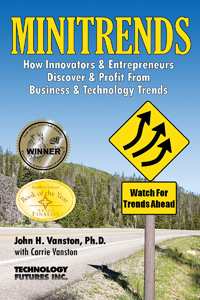Oct. 2-3: MiniTrends 2013: The Integration of Profit & Social Responsibility
June 21, 2013
Second Annual MiniTrends Conference
MiniTrends 2013: The Integration of Profit & Social Responsibility
October 2-3, Holiday Inn Town Lake, Austin, Texas
Discover, Profit, Do Good!
Wednesday, October 2, 2013
8:30 am – 5:30 pm, Reception 5:30 – 7:15 pm
You CAN be profitable and socially responsible. This event exposes that sweet spot where new and established businesses can find the tools and directional choices to profit and inspire themselves and their employees in whatever their line of business.
Join us in Austin, the place Forbes’ calls the “Best Big City for Jobs,” to listen and participate as all-star business leaders and forward thinkers reveal how to start new ventures and grow established organizations leveraging MiniTrends.
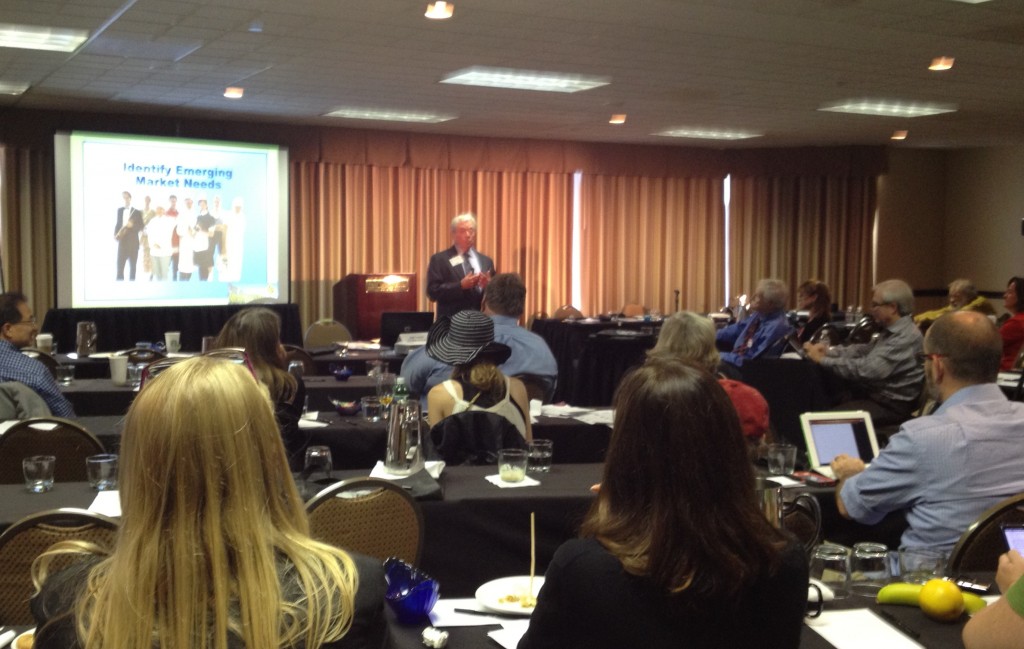 By understanding MiniTrends—emerging trends that will soon become important, but not yet widely recognized—you will discover effective ways to balance capitalism with complementary social values and philanthropy in your business.
By understanding MiniTrends—emerging trends that will soon become important, but not yet widely recognized—you will discover effective ways to balance capitalism with complementary social values and philanthropy in your business.
Find out what future trends and convergences are on the horizon and, of equal importance, how you can find profitable emerging trends of your own integrated with socially responsible values.
Austin is an exciting, growing entrepreneurial hub that offers a culture built on collaboration, innovation, creativity, and caring. What better place to find out how you, too, can develop a Minitrends Mindset!
You Should Attend if You are a Value-Driven:
- Entrepreneur wishing to identify, assess, and exploit attractive new business opportunities
- Decision Making Executive, Director, Manager, or in a Small or Mid-Size Business wanting to gain advantage by recognizing and utilizing emerging trends
- Innovative Thinking Executive, Director, Manager, or Professional in a Larger Business aspiring to distinguish yourself by your special insights and perceptiveness
- Investor interested in uncovering attractive new investment opportunities
- Job Seeker wishing to define employment opportunities
What You will Gain:
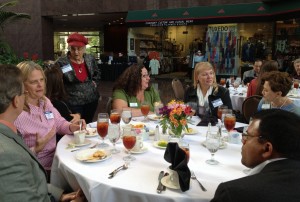 A creative mind-set and resources for finding and taking advantage of emerging trends and opportunities relating to your own area of expertise and interest.
A creative mind-set and resources for finding and taking advantage of emerging trends and opportunities relating to your own area of expertise and interest.- An understanding of how to integrate profit and socially responsible purpose and value in your business.
- A preview of MiniTrends that thought leaders see developing.
- Experience from innovative leaders sharing how they use emerging trends to start new ventures or grow established organizations for profit with attention to all stakeholders.
- Tactics to identify untapped business opportunities from converging trends in the business and social arenas.
- Interaction with speakers and fellow participants to learn, mix, and share ideas.
- Strategy and insights to create or grow your organization and, in the process, find your bliss.
- An opportunity to enjoy the Live Music Capital of the World!
What Attendees Say
Speakers:
Conference Chair: Dr. John H. Vanston, Chairman, Technology Futures, Inc.
 John founded TFI in 1978, building the Austin, Texas-based company into a leading authority in custom research and technology forecasting. His MiniTrends concept, designed to increase creativity, innovation, and success, is summarized in MINITRENDS: How Innovators & Entrepreneurs Discover & Profit From Business & Technology Trends. The book has received several Best Business Book awards and excellent reviews and endorsements.
John founded TFI in 1978, building the Austin, Texas-based company into a leading authority in custom research and technology forecasting. His MiniTrends concept, designed to increase creativity, innovation, and success, is summarized in MINITRENDS: How Innovators & Entrepreneurs Discover & Profit From Business & Technology Trends. The book has received several Best Business Book awards and excellent reviews and endorsements.
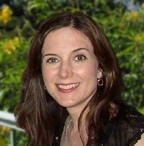 Conference Director: Carrie Vanston, Media and Marketing Director, Technology Futures, Inc.
Conference Director: Carrie Vanston, Media and Marketing Director, Technology Futures, Inc.
Carrie has many years of experience in public relations, marketing, and sales at TFI and in the entertainment industry. As co-author of MINITRENDS: How Entrepreneurs & Innovators Discover & Profit From Business & Technology Trends, she brings a distinct real-world quality to MiniTrends activities, particularly in the media communications and social media areas.
 Andre Angel, Co-founder/CEO at TangoTab; Co-Founder/Chairman, WorkMeter; Co-founder, Servoyant, LLC; Co-Founder/Chairman, CODEKKO Software
Andre Angel, Co-founder/CEO at TangoTab; Co-Founder/Chairman, WorkMeter; Co-founder, Servoyant, LLC; Co-Founder/Chairman, CODEKKO Software
Based in Dallas, Andre is a serial entrepreneur with global experience. His latest venture, TangoTab, is a real-time, online social enterprise business that offers diners discounts at participating restaurants, and donates a meal to the community each time you use the service. “When you eat, they eat.” Prior to Tango Tab, he co-founded, grew and sold numerous high-tech companies including CODEKKO, Experticity, NTR, Elastic Edge, and WorkMeter. Earlier, he was Global Vice President of Sales at Nortel Networks.
 Jeffrey Fry, Principal, Help Find Care; Chief Executive, Profit Prophet; Director/CMO, MainGain; Board Member, baqpak; Executive Director, Firefly Funds; Executive Director, SHINE Night; President, SEDA RICO, LLC;
Jeffrey Fry, Principal, Help Find Care; Chief Executive, Profit Prophet; Director/CMO, MainGain; Board Member, baqpak; Executive Director, Firefly Funds; Executive Director, SHINE Night; President, SEDA RICO, LLC;
Jeffrey has launched a new type of in-home healthcare service that empowers healthcare service professionals to go into business for themselves while better connecting in-home healthcare needs. Riding the minitrend of baby boomer parents needing innovative ways to care for their parents, this model empowers all stakeholders and drives the cost of home healthcare down. Jeffrey also has been involved in several startups and plays roles in several civic programs.
 Bijoy Goswami, Cofounder & Evangelist at ATX Equation, The Bootstrap, Aviri Consulting; Founder, Organizer, Bootstrap Network; CEO, Aviri Inc.
Bijoy Goswami, Cofounder & Evangelist at ATX Equation, The Bootstrap, Aviri Consulting; Founder, Organizer, Bootstrap Network; CEO, Aviri Inc.
Bijoy Goswami deeply interested in how we steward unique journeys for individuals, organizations, communities and beyond. He sees our unique human capability of building mental models as a vital part of this endeavor. He loves building and sharing simple, yet powerful models, including MRE, youPlusU and Bootstrap.
 Christopher Justice, Chief Executive Officer at Sparksight, Inc.; Founder, Justice Pest Services
Christopher Justice, Chief Executive Officer at Sparksight, Inc.; Founder, Justice Pest Services
Christopher co-founded Sparksight® in 2006 and has built the company into a well-respected design agency that specializes in event management, high definition video production and digital marketing. Combining wisdom and humor with common sense, Chris is a master at building better businesses through a combination of face-to-face and online marketing techniques. Christopher is a conscious leader that works hard to have a company that benefits all involved.
 Joy Miller, Marketing and Outreach Coordinator, City of Austin Small Business Development Program
Joy Miller, Marketing and Outreach Coordinator, City of Austin Small Business Development Program
Joy is a marketing and outreach professional with over 20 years of leadership experience in process improvement, human resources, and operations. She communicates with and counsels aspiring and existing small business owners in presentations and in personal communications to ensure understanding of City of Austin resources and assistance available to them.
 Steve Pearson, Lead Strategist, Founder, Visionex Solutions, LLC
Steve Pearson, Lead Strategist, Founder, Visionex Solutions, LLC
Steve’s passion is accelerating innovation and R&D by identifying emerging, adjacent and disruptive technologies. Companies ranging from Fortune 500s to small startups rely on Steve and his analysts to provide Competitive Intelligence, Innovation Support and Informed Strategic Development. He works with high-tech, electrical, mechanical, energy, construction and transportation industries.
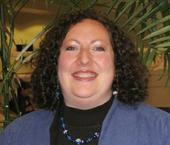
Eve Richter, VP of Community & Partnerships, door64
Door64 is a huge group community of Science, Technology, Engineering, and Math (STEM) industries influencers serving more than 30,000 STEM professionals in the Austin Area. Previous to door64, Eve served as the Emerging Technologies Coordinator in the Economic Development Division at the City of Austin, helping businesses, startups, entrepreneurs and individuals in the tech (and other) sectors to grow and be successful in the Austin community.
 Dr. Lawrence Vanston, President, Technology Futures, Inc.
Dr. Lawrence Vanston, President, Technology Futures, Inc.
Larry is an expert on the future of telecommunications and its significance to organizations and people. Since 1985, he has been the director and principal author of ongoing reports commissioned by the Telecommunications Technology Forecasting Group (TTFG), presently comprised of AT&T, CenturyLink, Verizon, and Windstream. Larry directs TFI’s popular TFI Communications Technology Asset Valuation Conference, now in its 9th year.
More speakers to be announced soon!
Preliminary Schedule
___________________
Post-Conference Methods MiniTrends Workshop (Optional)
MiniTrends Workshop: How to Discover & Profit From Emerging Trends
Thursday, October 3, 2013, 8:30 am – 12:00 pm
Go the next step to starting your own MiniTrends Adventure by attending this excellent applications workshop. In this session, we discuss basic MiniTrends principles and participants have hands-on opportunities to find, analyze, and profit from emerging trends that also offer a socially responsible aspect. Participants leave with a solid basis for developing their own “Minitrends Mindset.”
 MiniTrends Workshop BONUS!! Copy of award-winning book MINITRENDS: How Innovators & Entrepreneurs Discover & Profit From Business & Technology Trends.
MiniTrends Workshop BONUS!! Copy of award-winning book MINITRENDS: How Innovators & Entrepreneurs Discover & Profit From Business & Technology Trends.
To encourage you to attend this valuable post-conference half-day workshop, we are offering it at an exceptionally low price! Only $75 early bird for general admission attendees! ($100 after Sept. 1.)
___________________
Venue:
The Holiday Inn Austin Town Lake Hotel is a wonderful location to experience Austin’s major attractions. Located on beautiful Lady Bird Lake, the hotel has direct access to the lake’s hike & bike trails and is a mile from Austin’s famous 6th Street entertainment district. It’s also near the State Capitol, University of Texas, South Congress Bridge (home to Austin’s famous Mexican free-tail bats), and the Governor’s Mansion. The hotel offers complimentary shuttles to Austin Bergstrom International Airport and to 6th Street. Book online or call the hotel directly to book very reasonably-priced sleeping rooms. 800-593-5676. For more information about Austin, visit Austin 360 or Austin Chamber of Commerce.
Registration:
General Admission: Wed., Oct. 2, 8:30 am-5:30 pm followed by reception. Early Bird $395 (after Sept. 1, $495).
Non-Profit/Government/Academic Admission: Wed., Oct. 2,
8:30 am-5:30 pm followed by reception. Early Bird $295 (after Sept. 1, $395).
Student Admission: Wed., Oct. 2, 8:30 am-5:30 pm followed by
reception. $90.00.
Post-Conference MiniTrends Methods Workshop General
Admission (Optional): Thurs., Oct. 3, 8:30 am-12:00 noon. Early Bird $75 (after Sept. 1, $100). (Conference registration required.)
Post-Conference MiniTrends Methods Workshop Student
Admission (Optional): Thurs., Oct. 3, 8:30 am-12:00 noon. $15.00. (Conference registration required.)
visit MiniTrends 2013 with any conference questions.
9 Futurists Give 2020 Digital World Predictions to Mashable
July 11, 2012

9 Futurists give Mashable's Amy-Mae Elliott predictions for the digital future. Image courtesy of S58y. Used under Creative Commons license, http://creativecommons.org/licenses/by/2.0/deed.en.
We’re always interested in predictions for the future and were excited to be asked by Mashable’s Amy-Mae Elliott for one of our own in her article “9 Bold Predictions for the Digital World of 2020.” Dr. John Vanston chimed in on how voice quality by 2020 will be so excellent that “Younger generations will hear something that theretofore only older generations remember: the sound of a pin dropping.”
A couple of the futurists’ comments in the Mashable article refer to the massive amounts of information that is increasingly available to everyone. According to Dave Evans, Cisco Chief Futurist, “We are amassing unprecedented amounts of data – a zettabyte alone this year. This data is social and public (Facebook, Twitter, YouTube, blogs, etc.). Billions of devices (25-50 billion by 2020) will contribute exponentially to this avalanche of data … By 2015, Cisco Visual Networking Index predicts 1 million video minutes will traverse the Internet every second.”
According to Brian David Johnson, Futurist, Intel, “the size of the meaningful computational power keeps getting smaller and smaller. So, as we approach 2020 the size of the intelligent gets closer to zero in size, nearly invisible.”
Those that can use these massive amounts of information most imaginatively will have a very real advantage in the coming years. A good way to winnow through the information is finding minitrends in your areas of interest within the larger emerging trends. We talk extensively about this on this site and in our MINITRENDS book. Also stay tuned for our formal announcement of MINITRENDS 2012: A Conference on Translating Emerging Trends Into Business Opportunities scheduled October 17-18 at the Omni Downtown in Austin.
We are also intrigued by futurist Mike Walsh comments about virtual avatars: “By 2020 retail virtual avatars – on screens and in holographic projection – will start to become popular.” Perhaps, these virtual avatars will be waiting on us in the not too distant future!
We talk about Virtual Worlds being a minitrends opportunity in MINITRENDS. For the free excerpt from the book, see “Expanding Involvement in Virtual Worlds.”
Cheers,
Carrie
“Nine Emerging Minitrends to Watch” by Dr. John H. Vanston, MINITRENDS Author & Chairman, TFI
December 28, 2010
 Happy holidays to Minitrends blog readers! We appreciate your interest in our Minitrends posts and activities. As we start the new year, there will be many opportunities for those who are alert enough to recognize emerging trends, perceptive enough to realize their importance, and clever enough to take advantage of them. Here I suggest nine Minitrends—emerging trends that will become significantly important within 2-5 years, but are not yet generally recognized—that are well worth examining for possible action by those ambitious individuals who seek to start new ventures or keep existing businesses innovative and competitive.
Happy holidays to Minitrends blog readers! We appreciate your interest in our Minitrends posts and activities. As we start the new year, there will be many opportunities for those who are alert enough to recognize emerging trends, perceptive enough to realize their importance, and clever enough to take advantage of them. Here I suggest nine Minitrends—emerging trends that will become significantly important within 2-5 years, but are not yet generally recognized—that are well worth examining for possible action by those ambitious individuals who seek to start new ventures or keep existing businesses innovative and competitive.
Unlike megatrends, Minitrends are of a scope and importance to offer attractive opportunities to individual entrepreneurs, decision-makers in small and mid-size businesses, innovative thinkers in large companies, and adventuresome investors. In my new book, MINITRENDS: How Innovators & Entrepreneurs & Discover & Profit From Business & Technology Trends, I categorize the nine Minitrends below to those most applicable to different-sized groups. (In the book, I also discuss the background, current trends, and business opportunities of each of these Minitrends in more depth.) I do the same categorization below, but in reality, all provide opportunities to perceptive individuals in all-sized businesses.
Minitrends Particularly Applicable to Individuals or Small Groups of Individuals:
1. Expanding Involvement in Virtual Worlds (Free Virtual Worlds book excerpt available):
Virtual worlds are computer-based platforms that allow participants to engage in a wide range of real-world type activities, e.g., buying and building virtual world property, furnishing virtual world homes and offices, producing and selling virtual world goods, traveling, taking part in virtual world social activities such as parties and fundraisers, and communicating with other participants. Increasingly, virtual worlds are being used for educational purposes, product advertisements, new product modeling and testing, identification of new markets, and uncovering unexpected problems with new marketing programs.
2. Support for People Working at Home:
Although an increasing number of people are now conducting all or part of their work at home, these people often find they miss interacting with others and miss the convenience of facilities, equipment, and administrative support. A number of solutions are emerging to better meet the needs and desires of people working at home, including small offices or meeting rooms that can be rented by the day or the hour; chat rooms where people can meet informally to discuss ideas; semiformal groups that meet regularly to establish person-to-person interactions; and temporary support staffs organized to provide administrative assistance as needed.
3. Expanding Capabilities of Advanced Websites:
Although the World Wide Web had proven to be extremely popular, many believed a more interactive platform that took advantage of the Web’s power to communicate would be desirable (Web 2.0). Programmers are now expanding the capabilities of the Web to substitute computer activities for human activities, particularly activities that are repetitive, burdensome, and uninteresting (Web 3.0). Many believe Web 3.0 will eventually lead to effective artificial intelligence that can interact with humans in natural language.
Minitrends Particularly Applicable to Small and Medium-Size Companies:
4. Increasing Interest in Privacy:
Recent advances in technology, together with an increasing willingness of many to make personal information more easily available are threatening traditional concepts of privacy in terms of messaging, personal profiles, and identity. Techniques for countering these invasions of privacy, such as personal caution, technology aids, and group action are now being developed.
5. New Approaches to Giving and Receiving Advice:
Individuals and organizations commonly seek expert advice when making important decisions. In providing such advice, large consulting firms with large, multidisciplinary staffs, well-structured processes and procedures, huge computer capabilities, and long-standing reputations have traditionally had a major advantage. However, the ever-increasing power and ubiquity of information gathering, processing, and communicating technologies, small and medium-size consulting groups are often able to give more focused, timely, and user-friendly advice than the larger firms.
6. Evolution of Meaningful Maturity:
The twin trends of increasing life spans and decreasing retirement ages have caused a steady increase in retirement years. Because of social, personal interest, and/or financial reasons, many older individuals are either staying in their jobs longer or returning to the workforce. Their ability to utilize their experience, skills, and dedication effectively will depend on their current capabilities, their desires, and open opportunities to those willing to assist them.
Minitrends Particularly Applicable to Large Companies:
7. Advances in Digital Manufacturing:
Advanced digital manufacturing (ADM) processes build complex, custom-made parts by the addition of successive layers of material rather than traditional machining processes that cut, bend, and machine a part from stock material. The processes allow quicker production of prototypes and small production runs at a much lower cost. Recent ADM advances, including improved yield rates, reduced time-to-market, increasing variety of materials, and advances in 3D modeling software, have made ADM processes increasingly attractive to many manufacturers.
8. Increasing Electricity Use in Manufacturing:
The characteristics of electric power, such as high power density, no heat transfer medium requirements, controlled energy distribution, reduced material waste, and less environmental impacts, provide a number of benefits to manufacturing processes. Its use, however, has been limited by its relatively high cost. A number of factors, including advances in control technologies, changing customer needs, global competition, and increasing concern about the environment, are driving an increasing growth in the use of electricity in industrial processes.
9. New Applications of Nanotechnology:
When many substances are reduced to nano-size (100 nanometers or less) they often exhibit very different physical, electrical, chemical, and optical properties from the same substance at macro-size. These new properties often provide very unique and useful characteristics to nano-materials that can be used in a wide range of practical applications, such as cancer treatment, very high strength materials, special electronic systems, and water purification. Improved production techniques, decreased costs, and growing experience and understanding are increasing the practical applications of nanotechnologies
Minitrend involvement can give you a way to separate yourself from your colleagues and contemporaries. It provides a means for materially improving your business situation, your financial standing, and your personal satisfaction. I hope the Minitrends listed above will assist you or inspire you to launch your own exciting, profitable Minitrend Adventure that allows you to utilize your imagination, your logic, your innovative nature, and your basic good sense in the coming year.
Copyright 2011. Please feel free to reprint this article in whole or part with due credit to: “by Dr. John H. Vanston, MINITRENDS Author and Chairman, Technology Futures, Inc.” Thanks!
Is Google a Monopoly? EC Launches Investigation
December 2, 2010
 We monitor technology trends on this blog. One of the biggest tech trends of late is accusing Google of having a monopoly, or monopolies (plural), which begs the question of what, exactly, Google has a monopoly over? Most of the accusations center around search.
We monitor technology trends on this blog. One of the biggest tech trends of late is accusing Google of having a monopoly, or monopolies (plural), which begs the question of what, exactly, Google has a monopoly over? Most of the accusations center around search.
“Google ‘owns’ search,” says Columbia Law Professor, Tim Wu, in a November 13 piece for The Wall Street Journal‘s WSJ “Review” section. Wu’s new book, The Master Switch, is sounding the “Google as monopoly” bell which rang loudly before the U.S. Presidential elections in 2008 but has quieted down since.
Wu’s definition of “ownership” is quite a bit looser than a pure monopoly. Google “owns” less than two-thirds of the search market, according to ComScore. In June of this year, Google held 62.6% of search queries; Yahoo held 18.9%; and Microsoft’s Bing has grown to an impressive 12.7%. Having a dominant position in a field with few barriers to entry is not a monopoly. Just ask MySpace.
Two days ago, however, the accusations that Google has a monopoly moved from the rhetoric to real threat as the European Commission opened an investigation into whether Google has abused its position as the dominant search engine by intentionally skewing search results to benefit entities it owns. From the EC’s press release announcing inquiry launch:
The Commission will investigate whether Google has abused a dominant market position in online search by allegedly lowering the ranking of unpaid search results of competing services which are specialised in providing users with specific online content such as price comparisons (so-called vertical search services) and by according preferential placement to the results of its own vertical search services in order to shut out competing services. The Commission will also look into allegations that Google lowered the ‘Quality Score’ for sponsored links of competing vertical search services. The Quality Score is one of the factors that determine the price paid to Google by advertisers.
The argument here is not that Google is a monopoly because of its size. Rather, that Google has used illegal means to penalize competitors, which is what eventually gets so-called monopolies in trouble. I have long suspected that Google Blog Search favors blogs on the Google-owned Blogger/BlogSpot platform over rival WordPress. The EC review is based on favoring Google’s price comparison results over rival Foundem.
Two Google vice presidents have posted a response to the EC’s announcement on the Google Public Policy Blog, but they do not dispute the EC’s claim of favoritism. It was Microsoft’s exclusionary sales contracts that required PC makers to install its operating system and not competing software that got the software maker into antitrust trouble, not its market share.
As long as consumers have access to alternatives, does Google really have a monopoly on search? Does Facebook have a monopoly on social networking? The same could have been said of MySpace three years ago. MySpace has suffered hundreds of millions of dollars in losses for owner News Corp. Facebook could fade just as fast and, believe it or not, so could Google. In a previous post on this blog, we cited Morgan Stanley’s Mary Meeker as noting that seven of the top 15 Internet companies by market capitalization in 2004 are not in the top 15 today.
The primary reason for the demise of [Fortune 100] companies has been a failure to recognize and react to changing trends.
Those words come from the new book, MINITRENDS, by futurist John Vanston with Carrie Vanston. One of the main reasons the Vanstons wrote this book was to give large companies a formula for staying innovative. It’s easy for entrepreneurs to pioneer new ideas, and often much harder for those ideas to come from within giant organizations. But it can be done, and MINITRENDS provides a process these giants can use to identify and develop new methods and markets.
It has been Microsoft’s argument against the antitrust regulators that, absent criminal barriers to entry, its businesses are open to competition and subject to decline unless Microsoft continually innovates. Bill Gates, who is no stranger to the issues now facing Google, lashed out at Matt Ridley, author of the new book, The Rational Optimist, in last weekend’s WSJ Review:
Like many other authors who write about innovation, Mr. Ridley suggests that all innovation comes from new companies, with no contribution from established companies. As you might expect, I disagree with this view.
Gates knows that Facebook’s advertising network could upend Google’s fragile hold over the online advertising market, and that Facebook itself could fade as fast as MySpace did in a matter of a few years. For those companies who hope to stay ahead of the game, as Apple and Microsoft have consistently done, MINITRENDS provides a way of nurturing innovation — a process that itself is a significant innovation — in the quest to remain competitive.
STEVE O’KEEFE
News Editor, Minitrends Blog
Source: “In the Grip of the New Monopolists,” The Wall Street Journal, 11/13/10
Source: “Search engine Bing gains market share,” BBC Technology News, 07/14/10
Source: “Antitrust: Commission probes allegations of antitrust violations by Google,” EUROPA Press Releases, 11/30/10
Source: “MySpace losses lead way down for News Corp.,” Los Angeles Times, 08/05/09
Source: MINITRENDS: How Innovators & Entrepreneurs Discover & Profit From Business & Technology Trends, Technology Futures, Inc., p. 13.
Source: “Africa Needs Aid, Not Flawed Theories,” The Wall Street Journal, 11/27/10
Image by cambodia4kidsorg, used under its Creative Commons license.
Engineering Smart Foods to Combat Disease
October 25, 2010
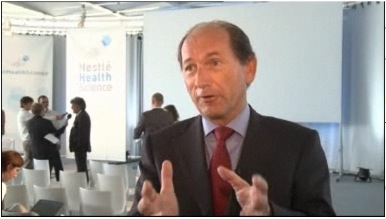
Nestlé CEO Paul Bulcke talks about the creation of Nestlé Health Science and the Nestlé Institute of Health Sciences. Click on image for the video interview.
Swiss food giant Nestlé has announced a series of major investments in developing medicinal foods that target chronic diseases. This comes as the U.S. Federal Trade Commission cracks down on Nestlé and other food companies for dubious health claims made about their products.
Nestlé CEO Paul Bulcke announced the creation of Nestlé Health Science and the Nestlé Institute of Health Sciences at a press conference on September 27, stating that the focus of the new companies will be to “prevent or correct acute chronic diseases with medicinal nutrition.”
A news release issued by Nestlé calls it a combination of “food and pharma,” and provides a list of some of the diseases being targeted:
These two separate organisations will allow Nestlé to develop the innovative area of personalised health science nutrition to prevent and treat health conditions such as diabetes, obesity, cardiovascular disease and Alzheimer’s disease, which are placing an unsustainable burden on the world’s healthcare systems.
The subject of longevity is the source of several trends mentioned in the new book, MINITRENDS, by John and Carrie Vanston. One trend resulting from increasing lifespans is the surge in the number of seniors who work. The authors state that “29% of those in their late 60s were still employed in 2006, up from 18% in 1985.” And that was before the Great Recession eroded retirement funds and home equity.
 One has to wonder about Nestle’s motives in development of these medicinal foods. Nestlé is the maker of many foods that have been linked to chronic diseases, such as childhood obesity. Nestlé was one of 17 food companies that have received letters from the Federal Trade Commission in February, warning that their ads “violated federal law by making misleading statements about disease prevention and health benefits.” Looks like Nestlé is out to bolster the science behind those claims.
One has to wonder about Nestle’s motives in development of these medicinal foods. Nestlé is the maker of many foods that have been linked to chronic diseases, such as childhood obesity. Nestlé was one of 17 food companies that have received letters from the Federal Trade Commission in February, warning that their ads “violated federal law by making misleading statements about disease prevention and health benefits.” Looks like Nestlé is out to bolster the science behind those claims.
SwissInfo.ch, who broke the story on the international wires, seems to be making commentary on the irony of the maker of candy bars now making health bars. It pairs the Nestlé announcement with a video about a government-sponsored study that shows that the “obesity among schoolchildren is increasing.”
What do you think of Nestle’s foray into the billion-dollar market of medicinal foods? Is it Trick or Treat?
STEVE O’KEEFE
News Editor, Minitrends Blog
Source: “Nestlé Health Science S.A. and Nestlé Institute of Health Sciences established to target new opportunity between food and pharma,” Nestlé Press Release, 09/27/10
Source: “Paul Bulcke, Nestlé CEO, talks about the creation of Nestlé Health Science and the Nestlé Institute of Health Sciences,” Nestlé Video, 09/27/10
Source: “Nestlé creates new bond between food and pharma,” SwissInfo.ch, 09/27/10
Source: “POM Wonderful: Not So Wonderful After All, Says the FTC,” FastCompany, 9/28/10
“The Futurist” Sees a Booming Market in MINITRENDS
October 6, 2010
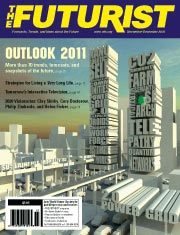 One of the great things about being a futurist is that you learn how to see into the future. For example, even though it’s October, I know that the November-December issue of The Futurist, the journal of the World Future Society — “the world’s largest organization devoted to the future’s exploration” — will contain a review of MINITRENDS: How Innovators & Entrepreneurs Discover & Profit From Business & Technology Trends, the new book by John and Carrie Vanston.
One of the great things about being a futurist is that you learn how to see into the future. For example, even though it’s October, I know that the November-December issue of The Futurist, the journal of the World Future Society — “the world’s largest organization devoted to the future’s exploration” — will contain a review of MINITRENDS: How Innovators & Entrepreneurs Discover & Profit From Business & Technology Trends, the new book by John and Carrie Vanston.
The World Future Society was founded in 1960 and is celebrating 41 years of uniting people who have an interest in predicting the future. Among the earliest supporters of the Society was Buckminster Fuller. Today, the Society boasts dozens of chapters throughout the U.S. and hosts an international conference, held in July this year in Vancouver, British Columbia. Among the notable resources available at the Society’s website are the interviews with leading technologists and a new collection of forecasts, “2020 Visionaries,” where 20 futurists are asked their predictions for this decade.
The review of MINITRENDS in next month’s issue of The Futurist will be written by contributing editor David Pearce Snyder. Snyder is partner with Dr. Gregg Edwards, Director of the Academy for Advanced and Strategic Studies, overseeing a virtual network of 30 trendspotters. In his review, Snyder will say:
While this book is specifically about a futures research methodology, it is also an unabashed business book. The authors’ expressed purpose in writing Minitrends was to enable entrepreneurs at every level of the workplace to take advantage of the foresight that they, themselves, can gather from the ‘infosphere.’
Snyder will write about the Minitrends “mindset” that results from reading the book. It’s like a spooky kind of vision that enables you to see Minitrends wherever you look. One of the things David Pearce Snyder sees in the future is a healthy, growing interest in Minitrends:
Because the early identification of emergent long-term trends poses such enormous marketplace value, it seems not improbable that traffic in minitrends will become a significant online phenomenon during the next two to five years. I am also prepared to believe that much of that traffic will be generated by freelance futurists who learned their trade by reading this book.
Thank you in advance, David Pearce Snyder and The Futurist, for the thoughtful book review you will be publishing in next month’s issue!
STEVE O’KEEFE
News Editor, Minitrends Blog
Source: “In Forecasting, Mini Is Big,” The Futurist, 11-12/10
Image of the The Futirist November-December 2010 issue cover is used under Fair Use: Reporting.
Trends in Nanotechnology: Killing Cancer with Light
October 5, 2010

On page 133 of MINITRENDS, Dr. John Vanston describes an interesting experiment in killing cancer cells with light therapy:
A very interesting application of nanotechnology in the medical field is a treatment for cancer currently being developed commercially by BioSpectra. This treatment is based on research developed by Rice University and the M.D. Anderson Cancer Research Institute. When reduced to nano-size, the color of gold depends on the size of the particles, e.g., red, blue or green. In this treatment process, gold particles of a size that corresponds to visible light are attached to biological molecules that migrate to the location of the cancer. The patient is then subjected to a beam of light of the matching color. The energy of the light is deposited in the gold particles, raising the temperature, and burning up the cancerous cells. Visible light can penetrate about 15 centimeters (roughly, six inches) into the body without damaging non-cancerous tissue, contrary to current radiation treatments.
Light therapy has a growing number of uses in the medical field. While the increasing use of light in medicine is a “megatrend,” the particular applications that are coming online in the next few years are Minitrends. These include not only using light to kill unwanted cells, but also to detect them.
Anne Trafton, a biologist and science journalist writing in MIT News, reports on the efforts of MIT researcher Geoffrey von Maltzahn and Harvard-MIT researcher Sangeeta Bhatia to use gold nanorods as a cancer detection tool. Trafton explains how the process works:
Gold nanoparticles can absorb different frequencies of light, depending on their shape. Rod-shaped particles, such as those used by von Maltzahn and Bhatia, absorb light at near-infrared frequency; this light heats the rods but passes harmlessly through human tissue.
The nanorods’ homing abilities also make them a promising tool for diagnosing tumors. After the particles are injected, they can be imaged using a technique known as Raman scattering. Any tissue that lights up, other than the liver or spleen, could harbor an invasive tumor.
Last week, Katia Moskvitch, a Canadian science writer working for the BBC, reported on advances in “Raman spectroscopy,” a method for using light in diagnostics. Raman spectroscopy can rapidly analyze the molecular composition of tissue and bone, detecting abnormalities. Moskovitch interviews University of Michigan researcher, Michael Morris, who says:
Raman gives you a molecular fingerprint, a composition of whatever it is you’re measuring. In diseased states, the chemical composition is either slightly abnormal or very markedly abnormal, depending upon the diseases.
The hope is to conduct diagnostics without needle sticks, blood drawing, or incisions. One of the most sought-after applications is a glucose meter for diabetics, with which the patients would only have to shine a light to their skin, rather than having to prick themselves to draw blood. Shirley S. Wang, a clinical psychologist from Yale University, wrote in The Wall Street Journal that researchers at the G.R. Harrison Spectroscopy Lab at MIT hope to have a wearable diabetes monitor within two to five years.
These are some of the many interesting uses of light in medicine that show promise for development in the near future.
STEVE O’KEEFE
News Editor, Minitrends Blog
Source: “Painless laser device could spot early signs of disease,” BBC News, 09/26/10
Source: “Targeting tumors using tiny gold particles,” MIT News, 05/04/09
Source: “Researchers Beaming at Light’s Medical Uses,” The Wall Street Journal, 08/31/10
Image by alanymchan, used under Creative Commons license.


